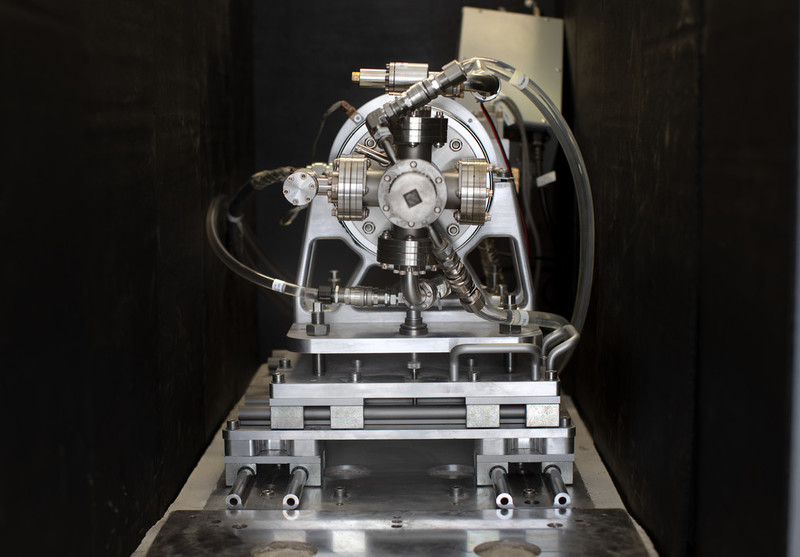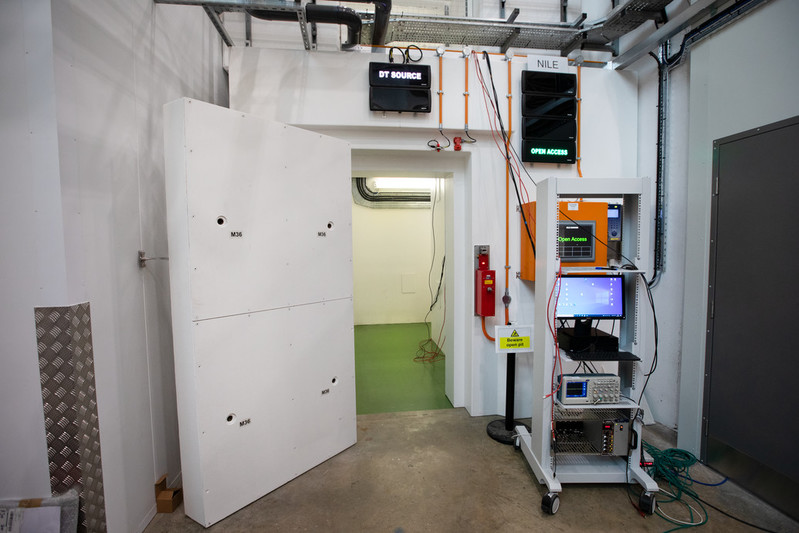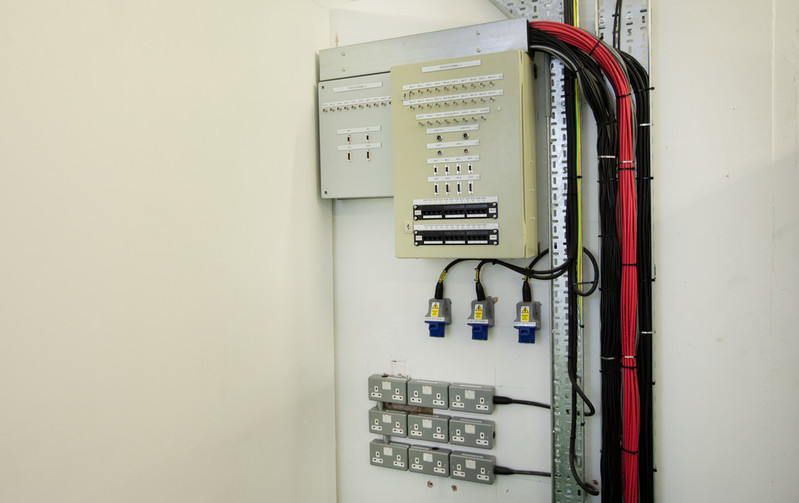
The DT source
The facility proves a large flexible space to allow irradiation experiments using the sources with numerous cable links to a new bespoke experimental office right next to the shielded bunker, allowing ISIS to extend its current irradiation capabilities by providing the ability to test setups and develop new test methodologies prior to using the main ChipIr beamline.
Alongside this role of providing complementary comparison studies to ChipIr of neutron induced effects in electronics, NILE is also starting to provide the ability to carry out generic fast-neutron irradiations in a variety of academic and industrial applications. We have started to use NILE to continue our programme of the development fast-neutron detectors and plan to provide opportunities for specific user training in irradiation and detection techniques as part of a university or Industrial courses.
The facility incorporates two small-scale compact neutron sources. Using two isotopes of hydrogen, deuterium and tritium, these neutron sources use two well known nuclear reactions to generate fast-neutrons fields at 14MeV (with a total flux of 1010 neutrons/sec) and 2.5MeV (with a total flux of 109 neutrons/sec).
NILE is available to both academic and industrial users,with access request going through the normal ISIS application route. We would advise contacting one of the ChipIr team (Chris Frost, Carlo Cazzaniga and Maria Kastriotou) prior to any application to discuss your needs.
NILE is looked after the ChipIR team. Left to Right: Maria Kastriotou, Christopher Frost, Carlo Cazzaniga
We envisage many areas of use for NILE by the academic and industrial communities:-
- allowing comparison studies of SEE effects with ChipIr and thermal neutrons
- method development for SEE testing
- testing setups prior to using the main ChipIr beamline
- generic fast neutron detector development
- more specific detector development and experiments requiring a fast-neutron radiation field
- training in SEE effects and neutron detector as part of university or industrial courses
NILE operates independently of the ISIS accelerator and so can be used during ISIS shutdown period and is available for academics via the normal ISIS beamtime application route.
Other departments at STFC's Rutherford Appleton Laboratory are also collaborating with ISIS on this new project.
- RAL Space, one of the lead partners in the SWIMMR - a major UK project that will improve the UK's capabilities for space weather monitoring and prediction, are funding irradiation studies at ISIS as part of this project which includes access to NILE and ChipIr.
- The Particle Physics Department (PPD) at RAL are using NILE to test detector used in the hunt for Dark Matter.

Nile Beamline

Nile Interlocks TS2
